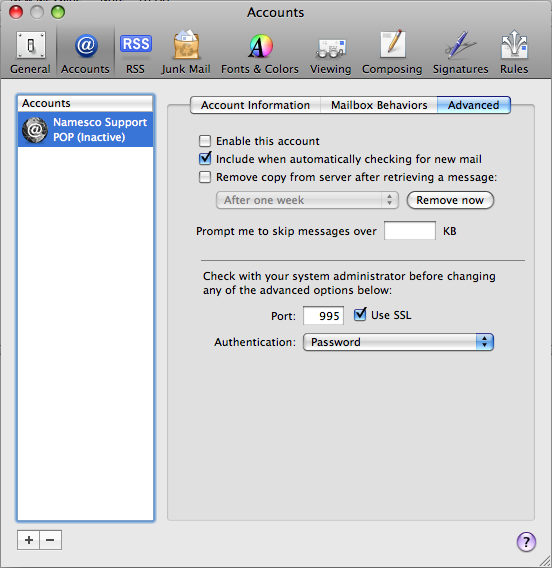

- MAC MAIL UPDATE PASSWORD MAC OS
- MAC MAIL UPDATE PASSWORD GENERATOR
- MAC MAIL UPDATE PASSWORD PRO
- MAC MAIL UPDATE PASSWORD PASSWORD
Enable the Show Passwords option and enter your login password when prompted. All the websites for which you’ve saved passwords in Safari will appear in a list. Launch Safari, open Safari’s preferences, and click the Passwords tab. If you seek only to recover saved website passwords and are running Safari under Mountain Lion, your task is easier. Enter that and click Allow, and the password will be revealed in the Password field. You’ll be prompted for the password for the login keychain. In the resulting window, enable the Show Password option. IDG Double-click a keychain item to locate the Show Password option. To learn the identity of a password, select All Items or Passwords in the Category pane, then find the the item you want the password for and double-click it. For example, if you’ve forgotten a password and would like to recover it, Keychain Access is the place to go. Keychain Access can do several useful things. Except in the case of certificates, you can double-click on one of these items to open a window where you can view the item’s attributes-name, kind, associated account, location (a website or network address)-as well as its access control (meaning the applications and services allowed to access the item). The largest pane, to the right, displays the contents of selected category items-for example, all of the items that have a password associated with them. Here you can choose to view specific kinds of things stored in the keychain-passwords, secure notes, certificates associated with your account, encryption keys, and certificates used broadly by your Mac. The top-left pane lists keychains accessible to you. Launch Keychain Access, and you’ll see that the window is divided into three panes. Thankfully, the contents of these various keychain files are combined into Keychain Access, so that you needn’t worry about where they’re held. The Mac places keychain files in multiple locations-/System/Library/Keychains, /Library/Keychains, and youruserfolder/Library/Keychains. Whenever you save a password-whether you’re prompted by an application or you’re saving a website’s password-it’s stored in the Mac’s keychain. Additionally, it can store secure notes, private keys, and certificates. It stores a wide variety of items-including passwords for email, websites, servers, network shares, Wi-Fi networks, and encrypted disk images. The Keychain Access application (/Applications/Utilities) is a front-end to that system.
MAC MAIL UPDATE PASSWORD MAC OS
Also since there is an unlimited total number of transfers, you can utilize up to 100 Manual Transfers.įor more information please see our Transfers Support Article, contact our transfers department at or call 866.96.Ever since Mac OS 8.6, the Mac has managed passwords with Keychain, Apple’s password-management system.
MAC MAIL UPDATE PASSWORD PRO
Another example: A Pro Dedicated server includes unlimited cPanel to cPanel transfers, this means you can have 150 sites (or even more) moved. Out of this 30, you can have 20 cPanel to cPanel transfers and 10 Manual Transfers, or any combination of the two that totals 30 or less websites.
MAC MAIL UPDATE PASSWORD GENERATOR
Please note that this does require that your old host's cPanel backup generator to be active.Ī few examples: An Aluminium Reseller account includes up to 30 free transfers. This will also include your emails and email accounts. 1While we can do unlimited cPanel to cPanel transfers for you, depending on your account, you will have a limited number of Manual Transfers.ĢFull cPanel transfers include all domains, Addon Domains, Subdomains, and cPanel settings.


 0 kommentar(er)
0 kommentar(er)
